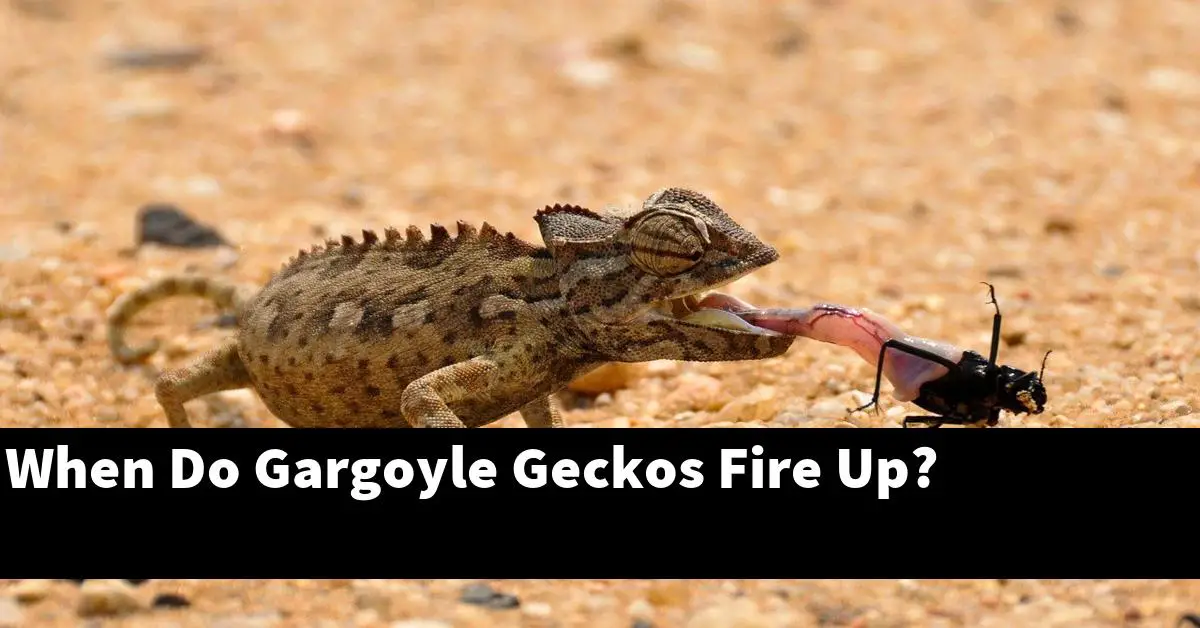Gargoyle geckos are nocturnal, so they are most active at night. However, they can also be seen during the day, especially if they are basking in a warm spot. If you see a gargoyle gecko basking in the sun, it is probably trying to regulate its body temperature.
Table of Contents
What triggers a gargoyle gecko to “fire up”?
When a gargoyle gecko is “fired up,” it is usually because the animal is trying to intimidate another creature or establish dominance. The gecko will open its mouth wide, hiss, and sometimes even lunge forward to make itself look as large and threatening as possible.
This behavior is often seen during mating season, when males are vying for the attention of females, but it can also occur when the gecko feels its territory is being invaded.
How does a gargoyle gecko’s “fire up” behavior benefit the species?
The “fire up” behavior of a gargoyle gecko is a way for the species to communicate. By doing this, they are able to warn other gargoyle geckos of potential danger, as well as attract mates. This behavior is also thought to help them regulate their body temperature.
What time are gargoyle geckos active?
Gargoyle geckos are active primarily at night, although they may be seen basking in the sun during the day. Their activity level varies seasonally, with more activity during the warmer months.
How do you get a crested gecko fired up?
There are a few things you can do to get your crested gecko fired up. First, make sure you have a good, sturdy hide for them to retreat to when they want to feel secure. A hide should be big enough for them to turn around in and should be slightly humid inside.
You can also try offering them live food, such as insects, to encourage them to be more active. Finally, make sure you provide them with plenty of vertical space to climb and explore. By giving your crested gecko the right environment and plenty of opportunities to exercise their natural instincts, you will help them stay healthy and active.
Do gargoyle geckos need heat at night?
No, gargoyle geckos do not need heat at night. These lizards are native to Madagascar, where the temperature drops significantly at night. In the wild, these geckos would simply find a warm spot to curl up into sleep.
In captivity, gargoyle geckos can be kept at room temperature. If you want to provide a basking spot for your gecko, you can use a reptile heat lamp. However, it is not necessary to keep the heat on at night.
Are gargoyle geckos nocturnal?
Gargoyle geckos are nocturnal creatures, meaning that they are most active at night. They are well-suited to this lifestyle, with large eyes that help them see in the dark and specialised toe pads that allow them to cling to surfaces.
This lifestyle has a number of benefits for gargoyle geckos, including avoiding predators and staying cool during the day.
How cold is too cold for a gargoyle gecko?
There are a few things to consider when determining how cold is too cold for a gargoyle gecko. The first is the temperature of their natural habitat. Gargoyle geckos come from tropical areas and do not do well in cold temperatures. The second is their size.
Gargoyle geckos are small lizards and can easily become chilled. The third is their metabolism. Gargoyle geckos have a slow metabolism and cannot generate enough body heat to keep warm in cold temperatures.
Ideally, gargoyle geckos should be kept in an enclosure that is between 75 and 85 degrees Fahrenheit. If the temperature drops below 75 degrees, the gecko may become sluggish and stop eating. If the temperature drops below 60 degrees, the gecko may go into hibernation. If the temperature drops below 50 degrees, the gecko may die.
Summary
Gargoyle geckos are one of the most popular lizard pets. They are also one of the most misunderstood. When do gargoyle geckos fire up? The answer is not as simple as you might think.
Gargoyle geckos are nocturnal lizards. This means that they are most active at night. However, this does not mean that they are inactive during the day. Gargoyle geckos are crepuscular, which means that they are most active at dawn and dusk.
So, when do gargoyle geckos fire up? The answer is that it depends on the time of day and the activity level of the gecko. If it is dusk and the gargoyle gecko is hungry, it will be more active. If it is daytime and the gargoyle gecko is basking in the sun, it will be less active.
In conclusion, when do gargoyle geckos fire up? It depends on the time of day and the activity level of the gecko.


